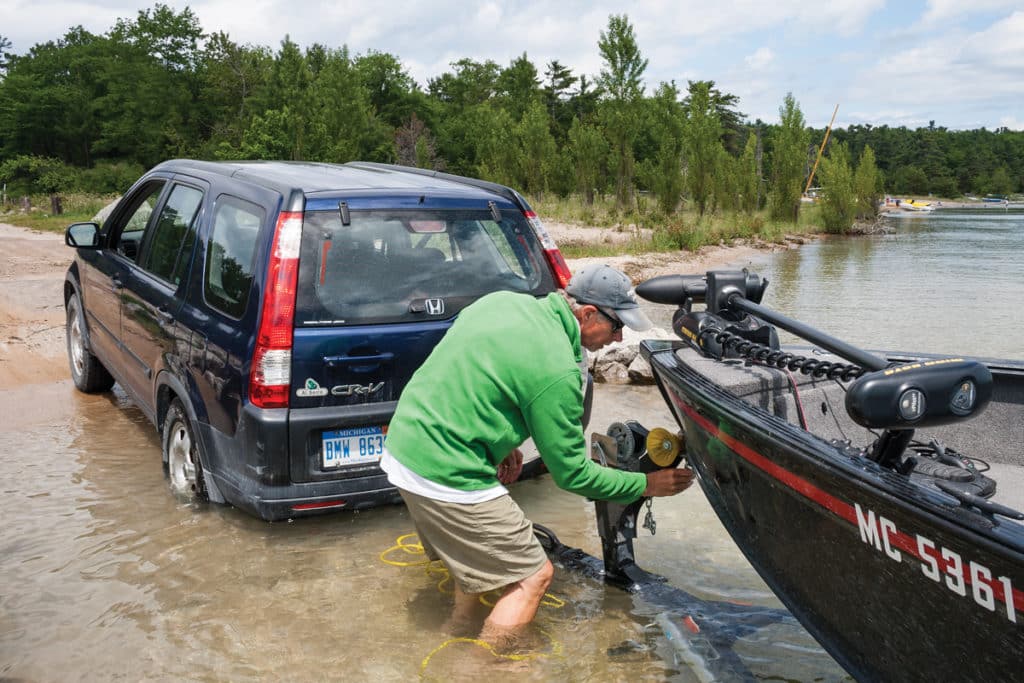
On launch ramps with steeper inclines — say around 20 degrees or more — getting the boat off the trailer is relatively easy. Yet not all ramps are user-friendly. What about ramps with more gradual slopes? There are a surprising number of such ramps on lakes and rivers in the Midwest. Getting the trailer in deep enough for the boat to float can also put your tow vehicle in dangerously deep water. The task turns even more difficult when launching single-handedly or on slippery pavement. Here are five ways to deal with launching on shallow ramps.
1. Get a Roller Trailer
On very shallow and unimproved ramps, a roller trailer might prove the only way to launch. Unlike bunk trailers, roller trailers let you slide the boat off when there’s not enough water to float it off. The boat also loads more easily, as it literally rolls up onto the trailer as you crank it forward with the trailer winch.
The same characteristics that ease launching also make it more likely that a boat will roll off the trailer at the wrong time. So it’s doubly important to secure the boat until the trailer is well into the water. I’ve seen too many boats slide off a roller trailer and bounce on the pavement. To avoid this, don’t rely solely on the bow strap (which might snap under sudden pressure); secure a safety chain to the bow eye as well.
2. Take the Plunge
When loading the trailer on a shallow ramp, where dragging the drive or prop on the apron is a concern, you might want to walk the boat onto the trailer and then attach the winch strap and winch it into place. Unfortunately, this means getting wet. While many trailer boaters take pride in never getting their feet wet, it may be the only way to get the job done on a shallow ramp.
3. Use a Finger Dock
It might pay to go out of your way a little and use a ramp with a finger dock, especially if single-handed. Back the boat down close to the finger dock. Secure long lines between the dock and boat so that, once it floats off the trailer, it won’t float away. Then pull the trailer away. Your boat will be waiting for you at the dock.
4. Float and Pull Forward
I use this single-handed launch technique with bunk trailers on medium-shallow ramps without finger docks. Before backing into the water, I unfurl from the trailer winch about 10 to 15 feet of strap, but keep it hooked to the boat’s bow eye, with the winch in forward gear. I back down far enough to float the boat off the trailer but then gently pull the trailer forward a bit. This allows me to tippy-toe down the trailer tongue, clamber over the bow, start the engine and unhook the bow strap. A platform that attaches to the trailer tongue can make this maneuver a bit easier.
5. Use Four-Wheel Drive
If your vehicle has four-wheel drive, engage it before launching or loading. Don’t wait until the wheels start spinning. This is particularly important on an unimproved ramp where the rear wheels might sink into the mud or sand. Once that happens, four-wheel drive might not be able to help you. I know. I’ve been there.









